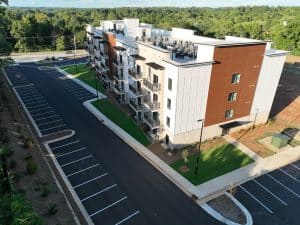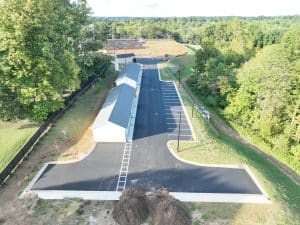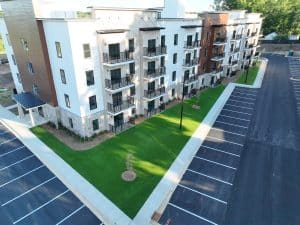As a commercial property manager, maintaining the appearance and functionality of your property is essential. One critical aspect of property maintenance is asphalt paving. Whether it’s for parking lots, driveways, or pathways, proper asphalt maintenance can enhance safety and curb appeal. However, managing asphalt paving projects can be daunting, especially when it comes to budgeting. In this blog, we’ll offer guidance to property managers on creating and managing budgets for asphalt paving projects, including long-term planning.
Assessing the Current State of Your Asphalt
Before diving into budgeting for asphalt paving, it’s crucial to assess the current condition of your property’s asphalt surfaces. This evaluation should include:
- Crack and Pothole Inspection: Identify areas with cracks, potholes, or structural damage. Addressing these issues promptly can prevent further deterioration and costly repairs.
- Surface Drainage: Evaluate the drainage system to ensure that water doesn’t accumulate on the asphalt, as standing water can lead to cracks and erosion.
- Traffic Patterns: Analyze the volume and type of traffic your asphalt surfaces endure. High-traffic areas may require more frequent maintenance.
Prioritize Repairs and Maintenance
Once you’ve identified areas that need attention, prioritize repairs and maintenance based on urgency and importance. Some areas may require immediate attention to prevent safety hazards, while others can be addressed over time. Prioritizing allows you to allocate your budget effectively and avoid overspending on less critical areas.
Create a Comprehensive Paving Plan
A well-thought-out paving plan is essential for long-term budgeting. Consider the following:
- Short-term vs. Long-term Goals: Define your immediate and long-term asphalt maintenance goals. This could include routine maintenance, resurfacing, or complete replacement.
- Regular Maintenance: Implement a schedule for routine maintenance tasks such as crack sealing, sealcoating, and striping. Regular maintenance extends the lifespan of your asphalt.
- Budget Allocation: Allocate a portion of your budget to long-term planning. This ensures you’re prepared for major projects when the time comes.
Seek Professional Guidance
Engaging with an experienced asphalt contractor is crucial for accurate budgeting. They can provide insights into your asphalt’s condition, recommend the best maintenance practices, and provide cost estimates for various projects. Additionally, a professional can help you create a timeline for completing necessary repairs and improvements.
Consider Sustainability
Incorporating sustainability into your asphalt budget can yield long-term cost savings. Sustainable practices like using recycled materials and energy-efficient paving techniques can reduce maintenance needs and extend the life of your asphalt surfaces.
Account for Unexpected Costs
Even with meticulous planning, unexpected issues can arise during paving projects. Allocate a contingency fund in your budget to handle unforeseen expenses without derailing your financial plan.
Effective budgeting for asphalt paving projects is essential for property managers looking to maintain their properties in top condition. By assessing your asphalt’s current state, prioritizing repairs, creating a comprehensive paving plan, seeking professional guidance, considering sustainability, and accounting for unexpected costs, you can ensure that your budget aligns with your property’s long-term maintenance needs. Remember that a well-maintained asphalt surface not only enhances safety but also adds value to your commercial property.
If you follow these tips and invest wisely in your asphalt maintenance, you’ll have peace of mind knowing that your property will remain attractive and functional for years to come.







